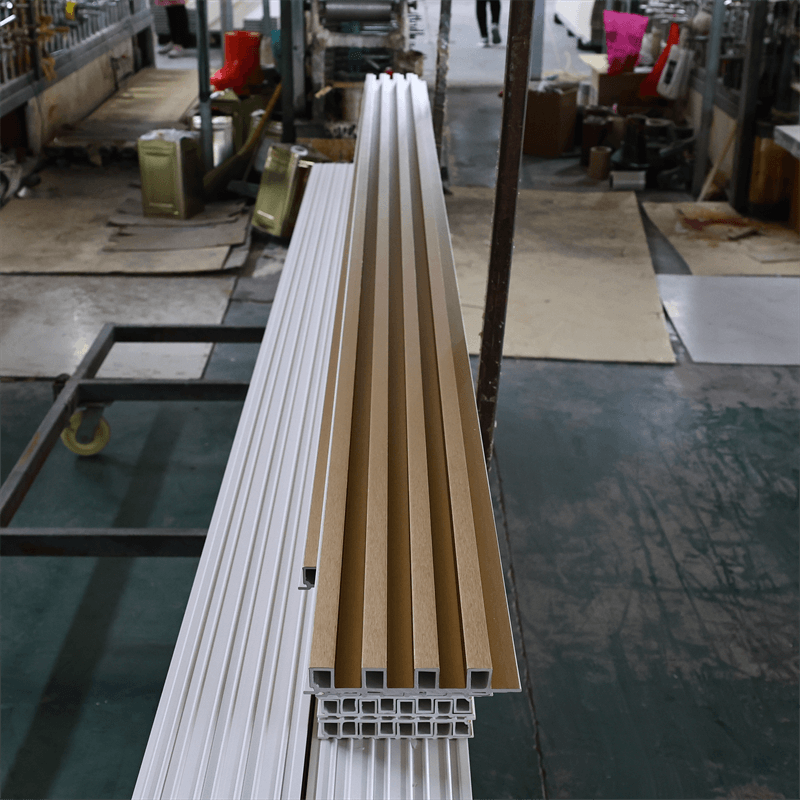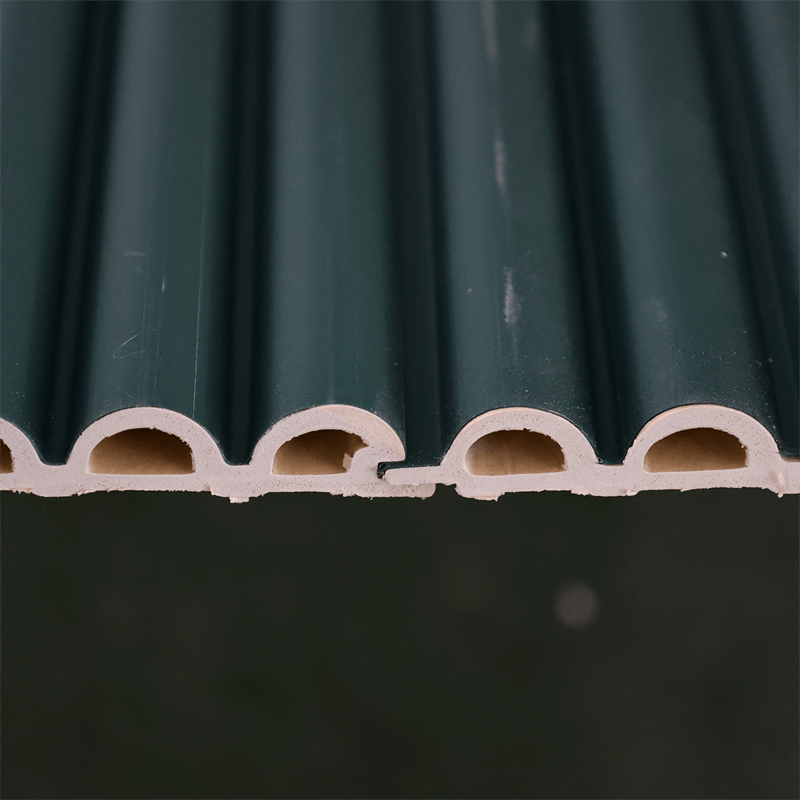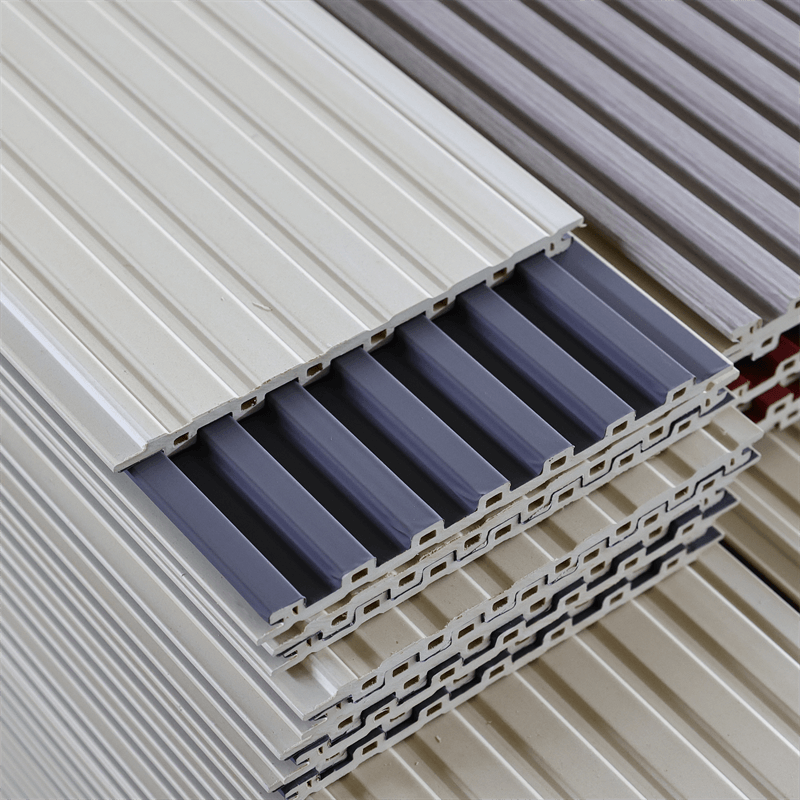In the realm of interior design and construction, the selection of appropriate wall materials is of utmost importance, especially in high-traffic areas.
These spaces require durable, low-maintenance, and visually appealing solutions that can withstand the rigors of daily use.
One such solution that has gained significant popularity in recent years is WPC (Wood Plastic Composite) wall panels.
This essay explores why WPC wall panels have emerged as the ideal choice for high-traffic areas, delving into their durability, low maintenance requirements, aesthetic appeal, and environmental benefits.
I. Durability:
One of the primary reasons why WPC wall panels excel in high-traffic areas is their exceptional durability.
Traditional wall materials like paint, wallpaper, or gypsum boards are prone to chipping, cracking, and fading over time.
However, WPC wall panels are specifically engineered to withstand heavy use and abuse.
Made from a combination of wood fibers and polymer resins, WPC panels possess remarkable strength and resistance to impact.
They can endure the constant flow of people, withstand accidental impacts, and remain intact even in busy spaces such as corridors, hallways, and lobbies.
Moreover, WPC panels are highly resistant to moisture, making them suitable for areas with high humidity or occasional exposure to water, such as bathrooms or kitchens.
This inherent moisture resistance prevents warping, rotting, and mold growth, ensuring the longevity of the wall panels in high-traffic environments.
II. Low Maintenance Requirements:
In high-traffic areas, regular maintenance can be a time-consuming and costly endeavor.
Fortunately, WPC wall panels are designed to minimize maintenance efforts while retaining their pristine appearance.
Unlike traditional materials that often require repainting, re-wallpapering, or frequent cleaning, WPC panels have a protective layer that resists stains, scratches, and marks.
This layer acts as a shield, preserving the panels’ aesthetic appeal and simplifying cleaning routines.
WPC wall panels are also resistant to fading caused by prolonged exposure to sunlight.
This characteristic is particularly advantageous in spaces with large windows or areas that receive substantial natural light.
By maintaining their original color and vibrancy, WPC panels eliminate the need for frequent touch-ups or replacements.
III. Aesthetic Appeal:
Beyond durability and low maintenance, WPC wall panels offer a wide range of design options that can enhance the visual appeal of high-traffic areas.
These panels are available in numerous colors, textures, and patterns, allowing for creative and customized interior designs.
Whether seeking a modern, rustic, or traditional look, there is a WPC panel design to suit every aesthetic preference.
Furthermore, WPC panels can mimic the appearance of natural materials like wood or stone while offering the advantages of enhanced durability and ease of installation.
This versatility makes them a preferred choice for designers and architects looking to create visually striking spaces that can withstand heavy foot traffic.
IV. Environmental Benefits:
In today’s era of sustainable construction, the environmental impact of building materials cannot be overlooked.
WPC wall panels offer notable environmental benefits that align with the principles of eco-friendly design.
These panels are composed of recycled wood fibers and polymer resins, reducing the demand for virgin materials and minimizing waste.
By utilizing recycled content, WPC panels contribute to the conservation of natural resources and the reduction of landfill waste.
Additionally, the production of WPC panels consumes less energy and emits fewer greenhouse gases compared to traditional wall materials.
This eco-friendliness extends throughout the life cycle of the panels, as they require minimal maintenance and have a longer lifespan than many alternatives, reducing the need for replacements and further resource consumption.
In high-traffic areas where durability, low maintenance, aesthetic appeal, and environmental considerations are crucial, WPC wall panels emerge as the ideal choice.

Their exceptional strength, resistance to wear and tear, low maintenance requirements, customizable design options, and eco-friendly characteristics position them as a superior alternative to traditional wall materials. Whether in commercial buildings, public spaces, or residential properties, WPC panels offer a practical and visually appealing solution that can withstand the test of time and footfall.
By opting for WPC wall panels, designers and architects can create inviting, durable, and sustainable environments in high-traffic areas, ensuring both functionality and aesthetic excellence.
Additionally, the durability and low maintenance requirements of WPC wall panels contribute to long-term cost savings.
Their resistance to damage and fading reduces the need for frequent repairs, repainting, or replacements, resulting in reduced maintenance expenses over the life span of the panels.
This makes them a cost-effective choice for high-traffic areas, where constant wear and tear are a common occurrence.
Furthermore, the aesthetic versatility of WPC wall panels allows for endless design possibilities.
Designers can explore various textures, colors, and patterns to create visually captivating spaces that leave a lasting impression on visitors.
The ability to mimic natural materials without sacrificing durability and functionality opens up new avenues for creative expression in interior design.
Lastly, by choosing WPC wall panels, stakeholders in the construction industry can contribute to sustainable practices and environmental stewardship.
The use of recycled materials in the manufacturing process reduces the strain on natural resources and minimizes waste generation.
Additionally, the energy-efficient production process and longer lifespan of WPC panels align with the principles of sustainable construction and support a greener future.
In conclusion, WPC wall panels offer a comprehensive solution for high-traffic areas, combining durability, low maintenance, aesthetic appeal, and environmental benefits.
Their ability to withstand heavy use, resist damage, and retain their visual appeal makes them an ideal choice for spaces such as corridors, lobbies, and public facilities.
By incorporating WPC panels into construction projects, stakeholders can create spaces that not only endure the demands of high footfall but also contribute to sustainability efforts.
With their numerous advantages, WPC wall panels have become a game-changer in the world of interior design and construction, revolutionizing the way we approach wall materials in high-traffic areas.


